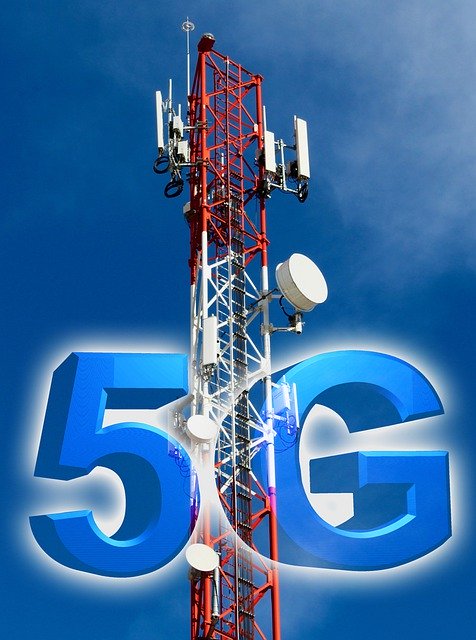The annual investments in public protection LTE/5G-equipped infrastructure will surpass $2 Billion with the aid of using the stop of 2020, predominantly pushed with the aid of using new build-outs and the enlargement of current committed and hybrid commercial-non-public networks in lots of certified bands throughout 420/450 MHz, seven hundred MHz, 800 MHz, 1.four GHz and better frequencies, further to steady MVNO networks for essential communications. Complemented with the aid of using a swiftly increasing surroundings of public protection-grade LTE/5G devices, the market will similarly develop at a CAGR of about tween 2020 and 2023, ultimately accounting for greater than $three Billion with the aid of using the stop of 2023.
The “Public Safety LTE & 5G Market: 2020 – 2030 – Opportunities, Challenges, Strategies & Forecasts” record gives an in-intensity evaluation of the general public protection LTE/5G market together with marketplace drivers, challenges, permitting technologies, utility scenarios, use cases, operational models, key trends, standardization, spectrum availability/allocation, regulatory landscape, case studies, opportunities, destiny roadmap, price chain, surroundings participant profiles and strategies. The report additionally gives international and local market length forecasts from 2020 until 2030, protecting public protection LTE/5G infrastructure, terminal equipment, applications, structures integration and control solutions, in addition to subscriptions and carrier revenue.
This 1,600-plus page report is the most comprehensive publication on the public safety LTE and 5G market. In addition to detailed market size projections, it profiles 1,100 ecosystem players and covers over 50 case studies of public safety LTE/5G implementations, as well as a database of over 500 global public safety LTE/5G engagements.
Request for Sample@https://www.supplydemandmarketresearch.com/home/contact/1350875?ref=Sample-and-Brochure&toccode=SDMREL1350875
Market Scope
Public Safety LTE & 5G Network Infrastructure
Submarkets
– RAN (Radio Access Network)
– Mobile Core
– Backhaul & Transport
Technology Generations
– LTE
– 5G NR
RAN Base Station (eNB/gNB) Cell Sizes
– Macrocells
– Small Cells
RAN Base Station (eNB/gNB) Mobility Categories
– Fixed Base Stations
– Deployable Base Stations
Deployable RAN Base Station (eNB/gNB) Form Factors
– NIB (Network-in-a-Box)
– Vehicular COWs (Cells-on-Wheels)
– Aerial Cell Sites
– Maritime Platforms
Backhaul & Transport Network Transmission Mediums
– Fiber & Wireline
– Microwave
– Satellite
Public Safety LTE & 5G Terminal Equipment
Technology Generations
– LTE
– 5G NR
Form Factors
– Smartphones & Handportable Terminals
– Mobile & Vehicular Routers
– Fixed CPEs (Customer Premises Equipment)
– Tablets & Notebook PCs
– Smart Wearables
– IoT Modules, Dongles & Others
Public Safety LTE & 5G Subscriptions/Service Revenue
Technology Generations
– LTE
– 5G NR
Network Types
– Dedicated & Hybrid Commercial-Private Networks
– Secure MVNO Networks
– Commercial Mobile Networks
Public Safety LTE & 5G Systems Integration & Management Solutions
Submarkets
– Network Integration & Testing
– Device Management & User Services
– Managed Services, Operations & Maintenance
– Cybersecurity
Public Safety Broadband Applications
Submarkets
– Mission-Critical Voice & Group Communications
– Real-Time Video Transmission
– Messaging, File Transfer & Presence Services
– Mobile Office & Field Applications
– Location Services & Mapping
– Situational Awareness
– Command & Control
– AR/VR/MR (Augmented, Virtual & Mixed Reality)
Regional Markets
– North America
– Asia Pacific
– Europe
– Middle East & Africa
– Latin & Central America
Request for Sample@https://www.supplydemandmarketresearch.com/home/contact/1350876?ref=Sample-and-Brochure&toccode=SDMREL1350876
Key Insights on Private LTE & 5G Network
– The annual investments in public safety LTE/5G-ready infrastructure will surpass $2 Billion by the end of 2020, predominantly driven by new build-outs and the expansion of existing dedicated and hybrid commercial-private networks in addition to secure MVNO networks for critical communications. Complemented by a rapidly expanding ecosystem of public safety-grade LTE/5G devices, the market will further grow at a CAGR of approximately 10% between 2020 and 2023, eventually accounting for more than $3 Billion by the end of 2023.
– Public safety LTE networks are playing an integral role in ongoing response efforts to combat the global COVID-19 pandemic. For example, in the United States, the FirstNet communications platform is being leveraged to deliver prioritized voice, data, video and location services for first responders and medical personnel – including mobile telehealth applications to facilitate remote screening and monitoring, as well as temporary coverage and capacity expansion for pop-up testing sites, quarantine centers and healthcare facilities using rapidly deployable cellular assets and in-building wireless systems.
– In addition to the high-profile FirstNet, South Korea’s Safe-Net and Britain’s ESN nationwide public safety broadband projects, many additional national-level engagements have recently come to light – most notably, the Royal Thai Police’s LTE network which is already operational in the greater Bangkok region, Finland’s VIRVE 2.0 mission-critical mobile broadband service, France’s PCSTORM critical communications broadband project, and Russia’s secure 450 MHz LTE network for police forces, emergency services and the national guard.
– Other operational and pilot deployments range from nationwide systems in the oil-rich GCC (Gulf Cooperation Council) region to local and city-level private LTE networks for first responders in markets as diverse as Canada, China, Laos, Indonesia, the Philippines, Pakistan, Lebanon, Egypt, Kenya, Ghana, Cote D’Ivoire, Cameroon, Mali, Madagascar, Mauritius, Canary Islands, Spain, Italy, Serbia, Argentina, Brazil, Colombia, Venezuela, Bolivia, Ecuador and Trinidad & Tobago, as well as multi-domain critical communications broadband networks such as Nordic Telecom in the Czech Republic and MRC’s (Mobile Radio Center) LTE-based advanced MCA digital radio system in Japan, and secure MVNO platforms in countries including but not limited to Mexico, Belgium, Switzerland, the Netherlands, Sweden, Slovenia and Estonia.
– Although the aforementioned references to several developing economies in the list of early adopters may come as a surprise, the lack of well-established digital LMR systems in many of these countries makes it possible to leapfrog directly from ageing analog technologies to LTE-based critical communications networks for both voice and broadband services, without the complex and time-consuming challenges associated with transitioning from large-scale and nationwide digital LMR networks.
– In much of the developed world, digital LMR networks are unlikely to be fully replaced by LTE and 5G until the late 2020s to early 2030s, especially in markets where large-scale systems have been rolled out or upgraded recently – for example, Germany’s BDBOS, Norway’s Nodnett and the Netherlands’ C2000 TETRA networks.
– Leveraging their extensive LTE/5G NR-capable cellular infrastructure assets and technical expertise, mobile operators have managed to establish a foothold in the public safety broadband market – with active involvement in some of the largest public safety LTE/5G engagements using both commercial and dedicated public safety spectrum.
– Dozens of vendors have already developed both client and application server implementations that are compliant with 3GPP’s MCPTT, MCVideo and MCData specifications. Frontrunner customers – for example, South Korea’s National Police Agency – have already begun transitioning to 3GPP-compliant MCX functionality, and we expect to see larger production-grade rollouts of the technology – beginning with MCPTT – in 2020.
– Due to the commercial immaturity of 3GPP-specified ProSe (Proximity Services) functionality, a number of interim solutions are being employed to fulfill direct mode, off-network communications requirements. These range from hybrid TETRA/P25-LTE capable terminals to LMR-based RSMs (Remote Speaker Microphones) and detachable accessories that attach to existing LTE devices to facilitate D2D communications over a sufficient coverage radius.
– Even though critical public safety-related 5G NR capabilities are yet to be standardized as part of the 3GPP’s Release 17 specifications, public safety agencies have already begun experimenting with 5G for applications that can benefit from the technology’s high-bandwidth and low-latency characteristics. For example, New Zealand Police are utilizing mobile operator Vodafone’s 5G NR network to share real-time UHD (Ultra High Definition) video feeds from cellular-equipped drones and police cruisers with officers on the ground and command posts.
– In the near future, we also expect to see rollouts of localized 5G NR systems for incident scene management and related use cases, potentially using up to 50 MHz of Band n79 spectrum in the 4.9 GHz frequency range (4,940-4,990 MHz) which has been designated for public safety use in multiple countries including but not limited to the United States, Canada, Australia, Malaysia and Qatar.
– As public safety-grade 5G implementations become well-established in the 2020s, real-time UHD video transmission through coordinated fleets of drones, 5G-equipped autonomous police robots, smart ambulances, AR (Augmented Reality) firefighting helmets and other sophisticated public safety broadband applications will become a common sight.”
Ask for Discount@https://www.supplydemandmarketresearch.com/home/contact/1350876?ref=Discount&toccode=SDMREL1350876
Contact US
SUPPLY DEMAND MARKET RESEARCH
Mr. Charles Lee
302-20 Misssisauga Valley Blvd, Missisauga, L5A 3S1, Toronto
Ph:12764775910
Email-info@supplydemandmarketresearch.com






Leave a reply